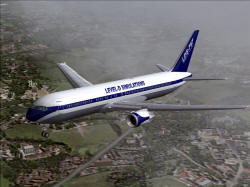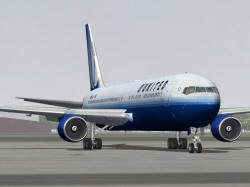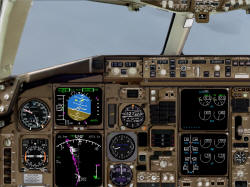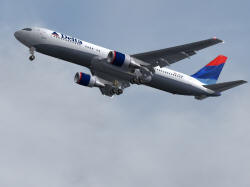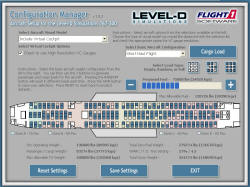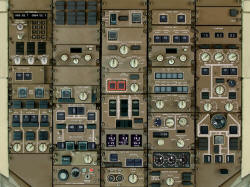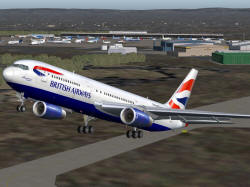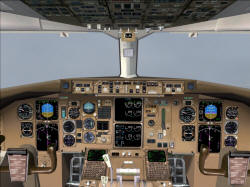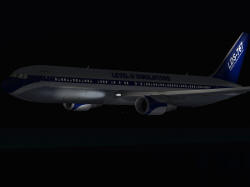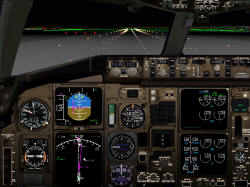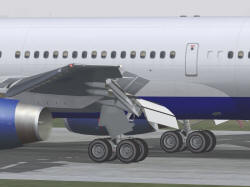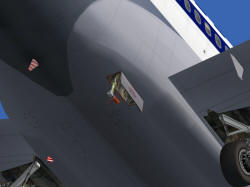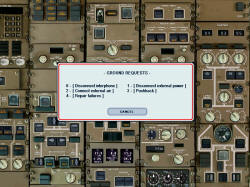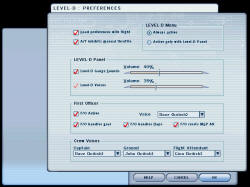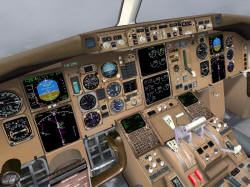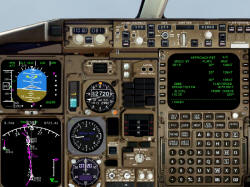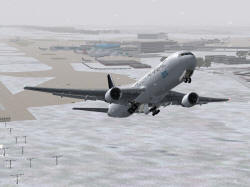
Level D Boeing 767-300ER Review – By Fred ‘mulletman’ Clark
The Master of the Atlantic Controls the Virtual Skies
It has been over a year now since the Boeing 767-300ER from Level D was first unleashed onto the FS market. In that time we have seen 3 service packs, a wealth of liveries and modifications, and a huge printed manual, sold separately. Despite its age, it is still holding its place at the top of the list of airliner add-ons.
There are other packages available that make flying in FS even more realistic, however, none have the sensation, and reward that flying this aircraft does. From Cold and Dark, through to cruise, and then back down again, there is an everlasting feeling of completion, and satisfaction but most of all, a feeing that you are in command.
And that should be the case, as Level D is the same team that bought us 767 Pilot in Command, for Microsoft FS2002. Back then it was a simply stunning product, and in the here and now, it remains such.
Of course, the same trends apply for Boeing's real product. The 767 is a real workhorse. Announced as a stretched version of the -200, the 300 first flew on 30th January 1986, with the ER version taking off on December 19th of the same year. The 767 is perfect for airlines with spasmodic or seasonal requirements. It is very economical on long-range routes, where a 777 or 747 is too big and just as good on short haul routes, where a 737 is too small. It is larger than its sister aircraft the 757, but shares a lot in common with her, especially in the flight deck. There is even a freight version of the -300, although Level D has chosen not to model it.
And the real 767-300ER can be watched by CD owners of the LDS model, as the product is shipped with an excellent and informative ITVV DVD, which follows a Leisure Airways 767 from London Gatwick to Orlando Airport, in the US. The captain explains most of the functions of the flight deck, and also the North Atlantic tracks, something that as a Virtual 767 pilot, you should make yourself aware of, as the real aircraft cross the Atlantic more times per day than the more famous Concorde and 747 did when put together.
There is a strange fact amongst flight simmers, that despite over 80% of your flight time being spent fiddling around with buttons, and actually flying the bird, simmers still demand incredibly high quality visual models. Despite PIC having great 2D panels, the visuals were the let down of that product. With the new 767-300ER, you will find it hard to believe that it is not the real thing. From the tip of the nose, past the pitot antennae, under the wing roots, around the undercarriage and up to the tail you cannot fail to see that this looks like the real thing from the outside, as much as it feels like you are flying on the inside.
Both the CD version and the download version come installed with only one livery, the Level D house scheme. This is of course fictitious, and you will want to have some real ones. Fear not my friend, for there are hundreds of repaints on major internet download sites, as well as a repaint kit, and some of the finest liveries I have ever seen on a visual model found on Level D’s homepage. As textures are one of the most integral parts of a good visual, it is good to see that Level D have acknowledged this and put a lot of effort into it.
And performance has also been taken into account. Both 32bit high quality textures and DXT3 textures are available for download depending on your preference. Once you have downloaded the schemes you want, you can then install them through the excellent repaint manager, in little time.
Of course, despite many other frame saving options, including the option to run with no VC and photo real side views instead (so you don’t fall out) or no wing views, an aircraft of this much detail will still harm your frame rates DXT3 or not. I have a fairly fast system, but when on the runway at airports like the default Heathrow I got around 12-14 fps in all views. It is not the biggest frame hog on my system, but it is not the easiest either.
Standing on the outside is all very well and nice, but it is the cockpit that you really will enjoy. Sitting in the VC, it feels like you are home. Textures are superb, with the animations of throttle levers, wipers, parking breaks etc smoothly displaying. Unfortunately the overhead is not modeled in 3D, but is fully clickable, as is the whole of the flight deck. When you click on the FMC, a pop up of it's 2D counterpart appears, for easier programming. Although this may deter some TrackIR users, I find it makes flying from this view easier, as I have struggled to read the FMC in the Flight 1 ATR and other add-ons and pilot the aircraft that the same time. Other click spots allow for various 2d panels to appear, however, their 3D counterparts do work.
The superb level of detail in the fine VC also appears on the 2D panels. The 767 flight deck represents an age where glass cockpits and flight computers were being applied heavily, but analogue gauges were still being relied on. Hence this panel has all the items you would expect to find in a ‘glass’ airliner, but with all the backups of a ‘steam’ one.
Despite it being designed for users on 1240x1024 resolutions, the gauges are clearly read on my 1024x768 res monitor, although I have had to consult the manual a few times as to what a label reads. These gauges were just as readable at night, with several lighting modes including dimmed for takeoff and floodlit. These different lighting modes can also be experienced, and changed, in the VC .
The FMC comes as a pop up, and is easy to program. After SP3, the font becomes smaller, but this can either be rectified by enlarging the FMC on screen (which I found out through the excellent LDS support forums) or, like me, you just get used to it. I have already experienced several FMC’s before this one so this didn’t come as a shock, however, for first time FMC users, I would imagine that this example will not be too difficult. Something I am new to however is the IRS, or Inertial Reference System. This means that you have to spend a full 10 minutes at the gate, without moving the aircraft before you can depart, although this time can be cut using the options menu.
At the options menu, found by pressing ALT on your keyboard, there are also other options, including crew nationality (the cabin crew have a habit of reminding you that it is too cold or hot) how much work the First officer takes on (resetting the MCP Panel for VNAV climbs/descents, gear lever, flaps etc) or turning him off, or if you want to fly from the included first officer panel. You can also set up failures, from the long list, and import panel data from another flight, into your current situation. This is an extremely useful feature, especially for continuing long haul flights, and I think it should be implemented on all, particularly long range aircraft, software.
Unlike some designers panels, navigating around is through my preferred way using panel switcher icons. These are moderately large and easy to locate. Like the DVD, CD version owners have the pleasure of having a printed wall chart to show these spots. Setting altitudes on the MCP, or radio frequencies is not done through my preferred method however. I prefer left click to increase figure, and right click to decrease. LDS chose to do the same as the default, and this can often lead you to having to fiddle around with the dial, as you skip past the figure you need to enter.
This, and the fact that you cannot place range rings on the Navigational Display are the two features that I really think should be changed in Level D’s next planned release, the 757-200. There are also some minor bugs, for example, when I ‘joyride’ the aircraft I can clearly hear some captain announcements that are not said under normal planned flight. However these are factors that do not spoil the immersion of flying this aircraft. Whether you fly your entire flight by hand, or go on the automatics from dawn to dusk, you will feel right at home.
The included documentation, despite its length will tell you everything about the systems, and how to fly the aircraft. If you have a spare £20, you could even splash out on a user’s manual. And, once again referring to the CD owners luck, the CD includes a printed tutorial, London to Paris, to get you airborne in no time at all. Level D also has the Flying Club website, where you can download several files to enhance your experience.
There is a lot more to say, and it is all praise. But I should stop short and say 'go and buy'. The package that the Level D team have produced surpasses anything available on the market today. Even if you are a fighter pilot you will enjoy piloting the aircraft as much as any commercial captain does. Every time the ground crew say: “have a good flight” you know you are on your way to do exactly that
Click here to go to Level-D's home page.
Click here to go to the Level-D Flying Club.
![]()
Fred Clark © 2006
